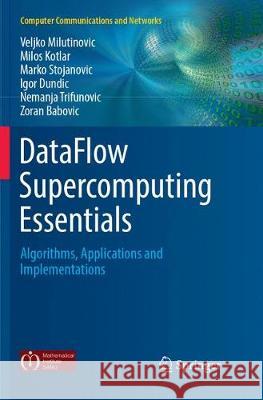Dataflow Supercomputing Essentials: Algorithms, Applications and Implementations » książka
topmenu
Dataflow Supercomputing Essentials: Algorithms, Applications and Implementations
ISBN-13: 9783319881836 / Angielski / Miękka / 2018 / 150 str.
Kategorie:
Kategorie BISAC:
Wydawca:
Springer
Seria wydawnicza:
Język:
Angielski
ISBN-13:
9783319881836
Rok wydania:
2018
Wydanie:
Softcover Repri
Ilość stron:
150
Oprawa:
Miękka
Wolumenów:
01











